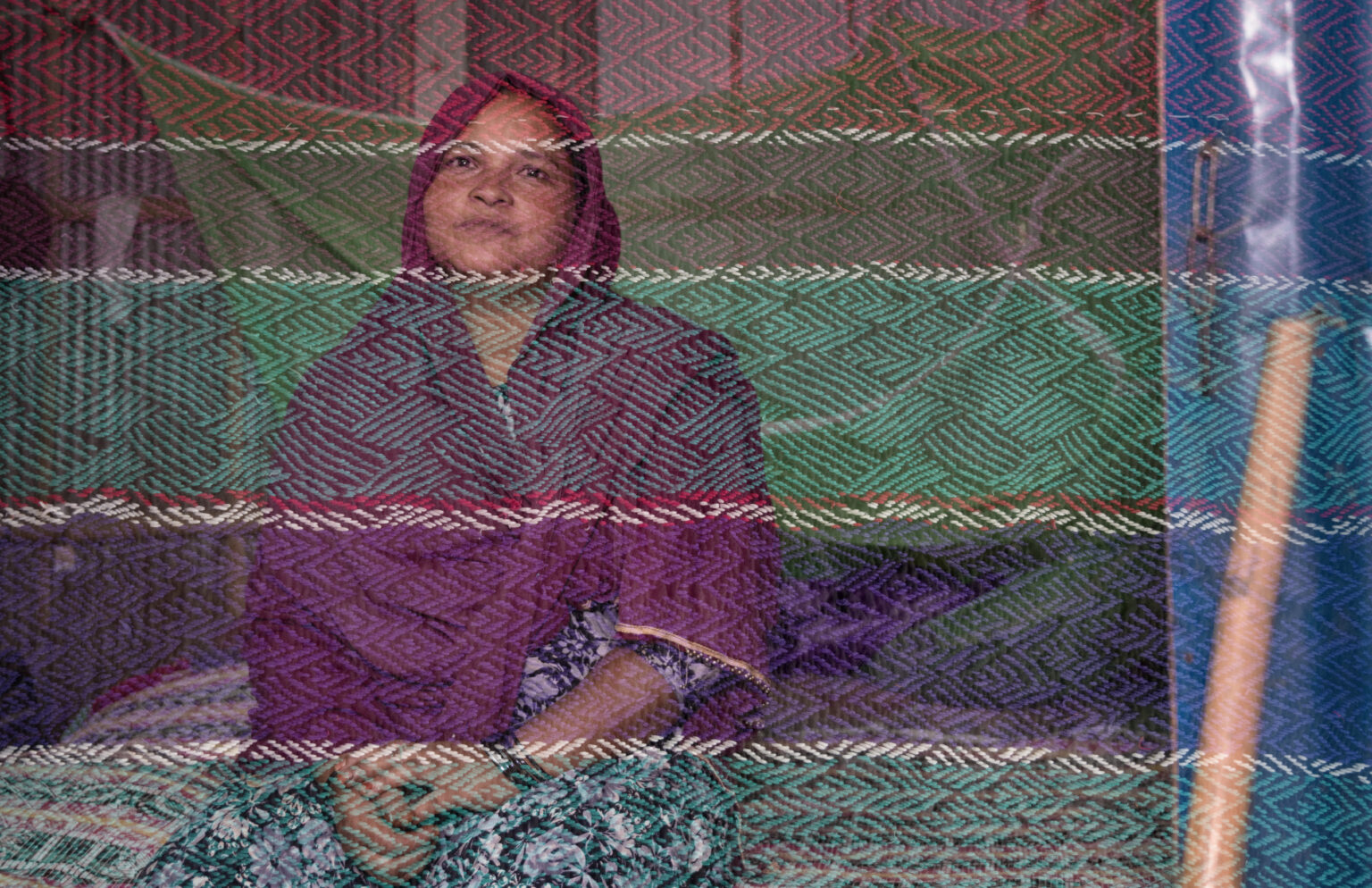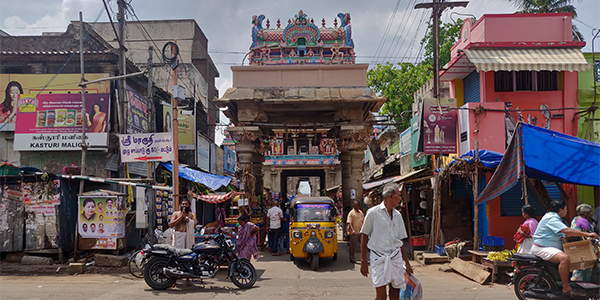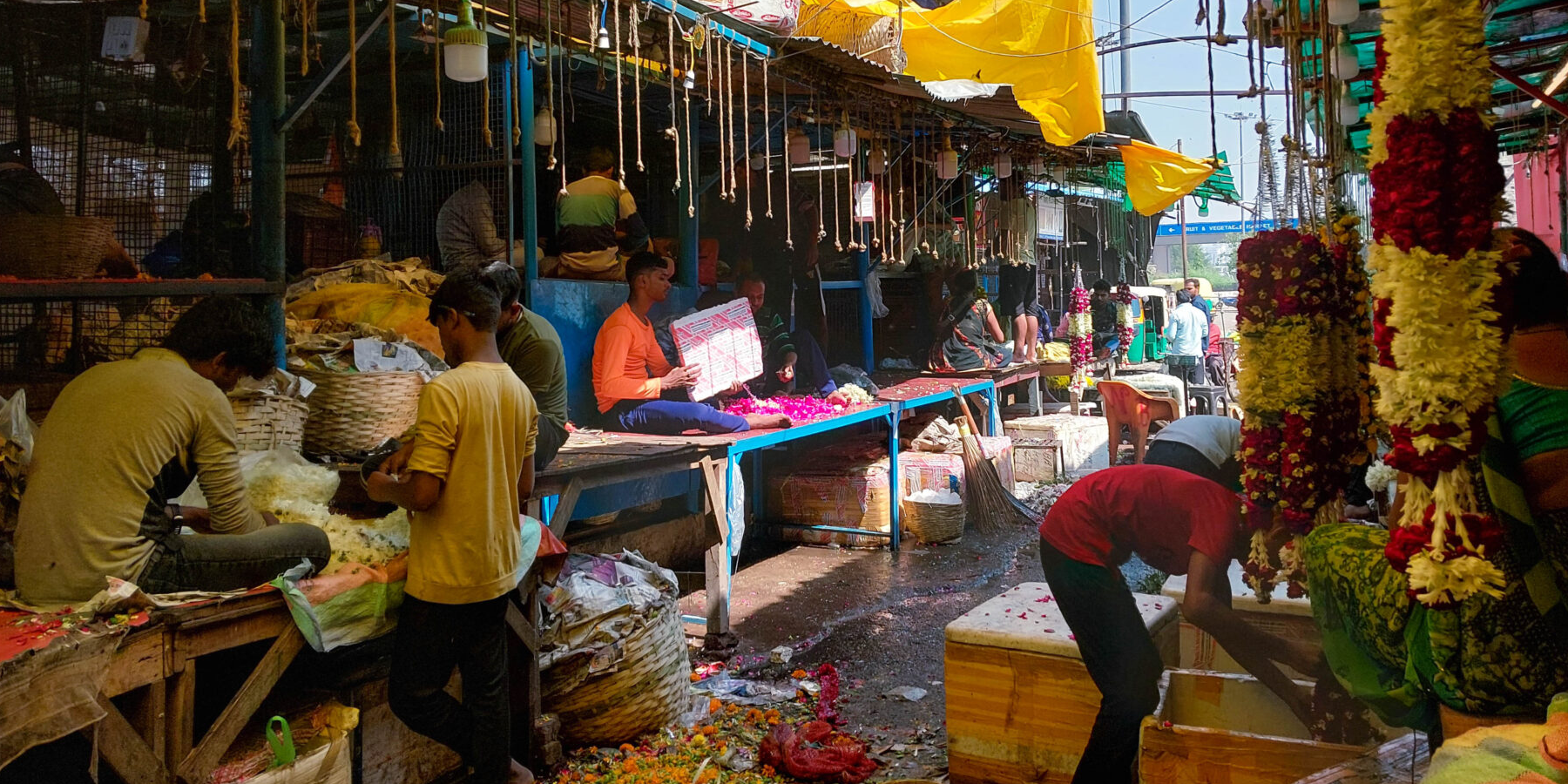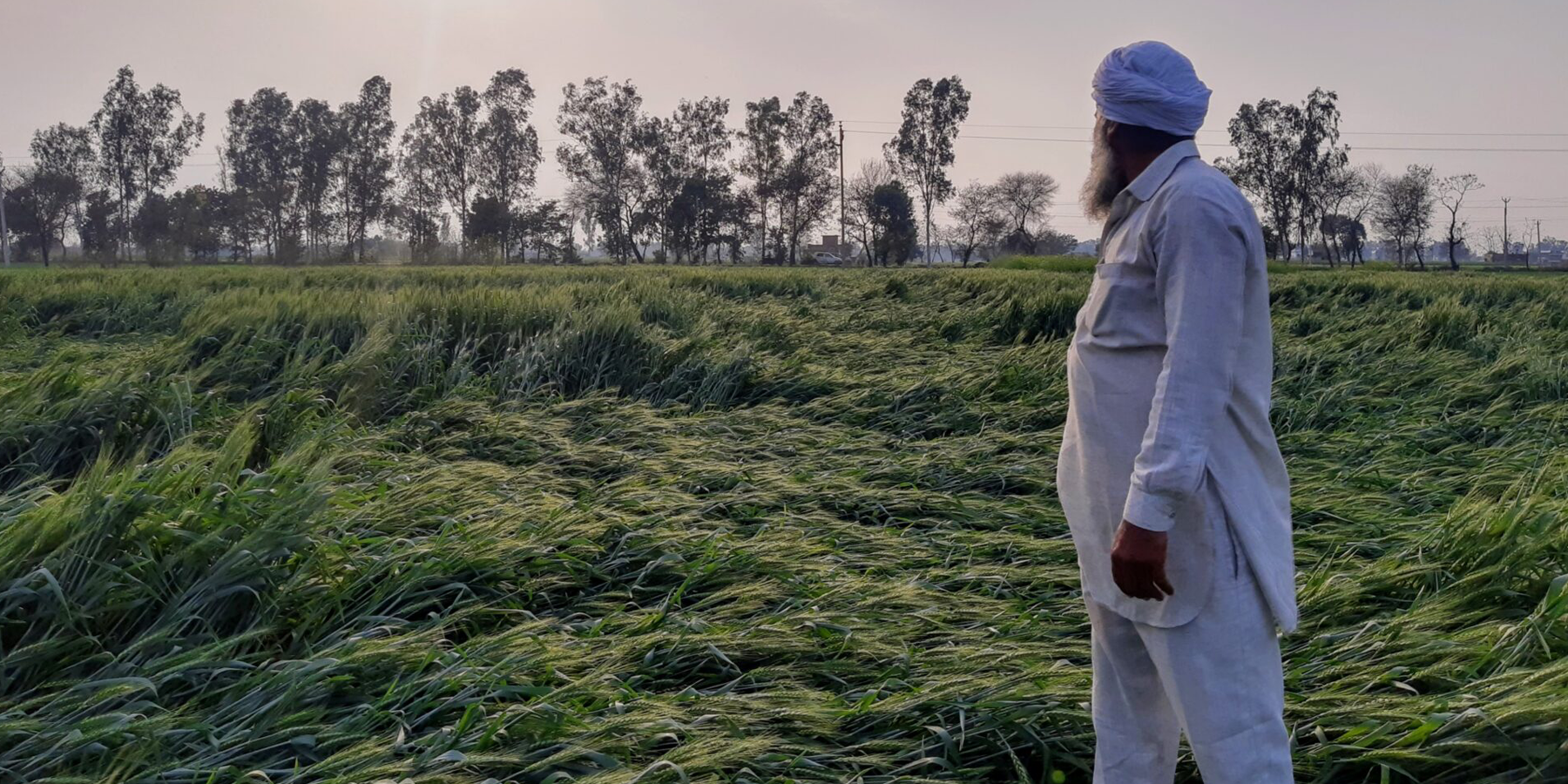With colourful and bustling shops lining a labyrinth of narrow alleyways that lead to grand historical architecture, Chandni Chowk depicts organised chaos. Designed and built in the 17th century by Jahanara Begum, with the patronage of her father Emperor Shah Jahan, Chandni Chowk was one of the largest wholesale markets in the historic capital of Shahjahanabad, today known as Old Delhi. Chandni Chowk is culturally enriched in heritage and historical monuments. However, the chowk today faces a plethora of issues, including traffic congestion, infrastructure deterioration, encroachment, and overall low quality of life. These are born of the rising pressures of homing a growing and urbanising population amidst administrative neglect
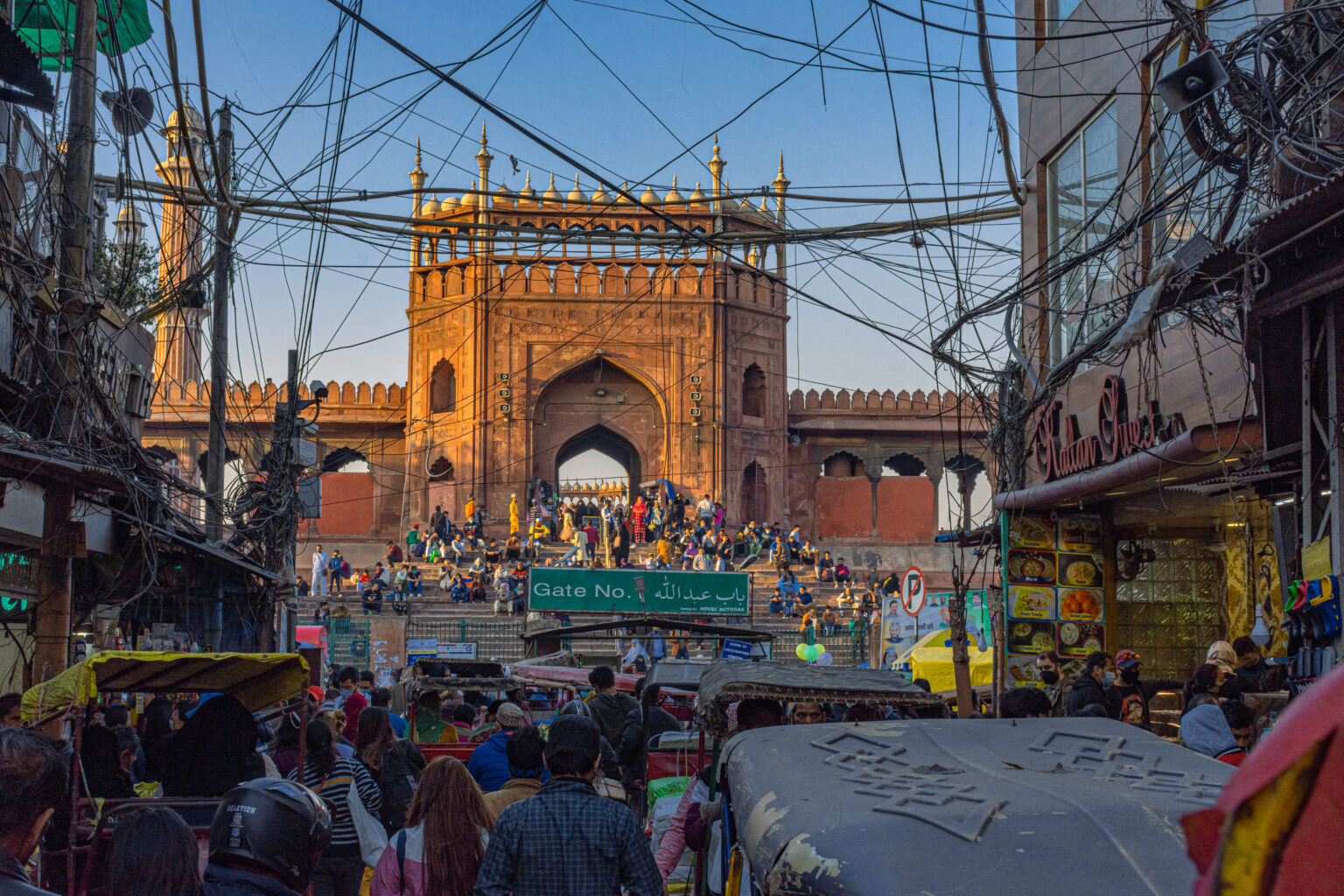
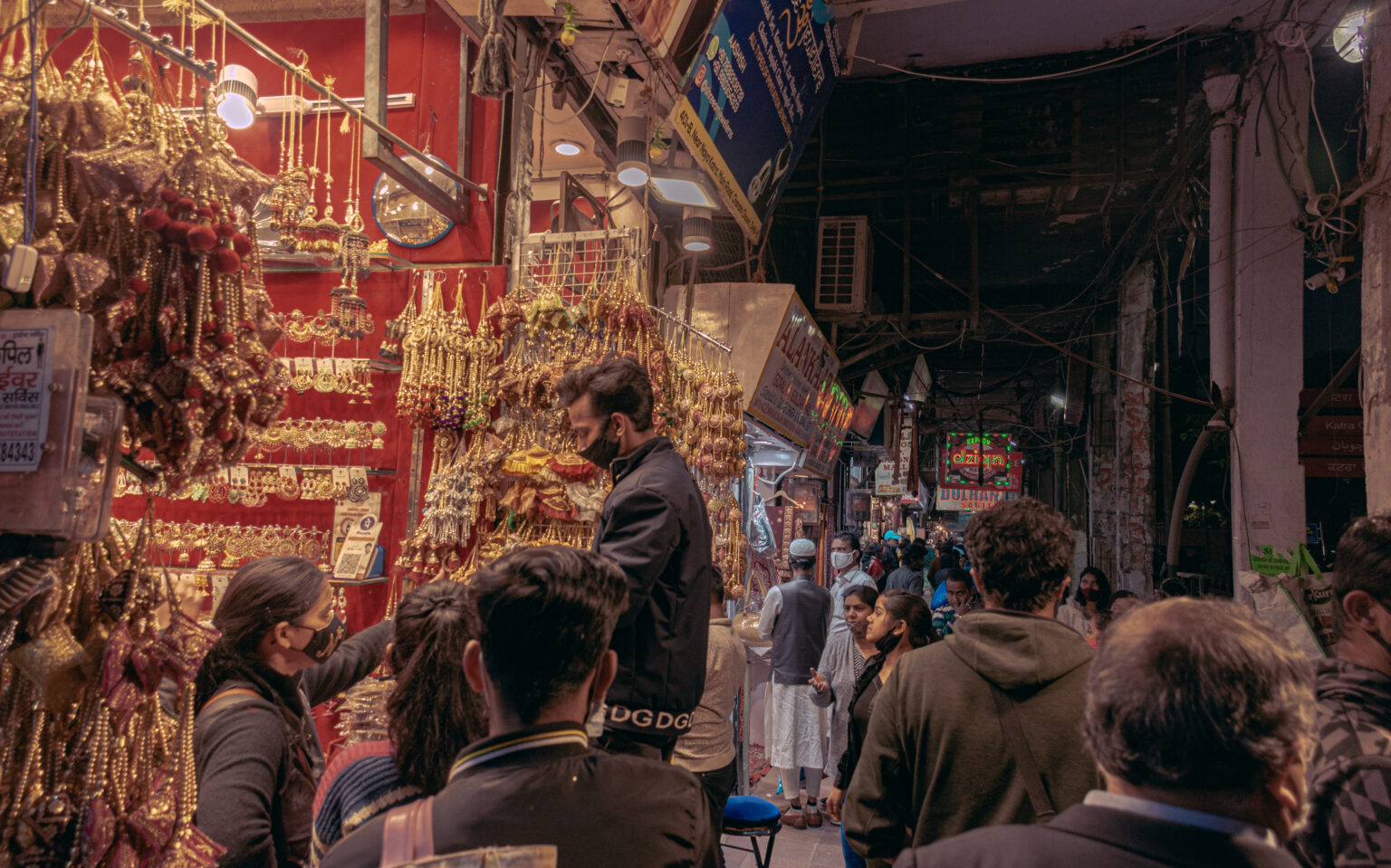
Chandni Chowk is caught between the urgency for urban development to accommodate the rising population and the need to preserve its historic landscape. This photo essay critically examines the redevelopment plans undertaken by the Delhi government and highlights the various issues it raises.
The idea of redeveloping Chandni Chowk first came up in 2004. After which, the Shahjahanabad Redevelopment Corporation was set up in 2008. However, the redevelopment plan was not implemented until a decade later, in 2018. With the combined efforts of Shahjahanabad Redevelopment Corporation and Delhi’s Public Works Department, the project was finally completed in September 2021 [1]. Despite heavy opposition from historians, urban planners, and conservation experts, the government went ahead with the ambitious project [2][3]. The plan aimed at making the market more pedestrian-friendly, decorating the spaces with benches and plants, installing CCTV cameras to ensure security, and creating a no-traffic zone for motor vehicles from 9:00 am to 9:00 pm, amongst other measures. It also revamped a 1.3 km long stretch paved with red sandstone and granite, extending from the Red Fort to Fatehpuri Masjid, which served as a primary route of thoroughfare since the Mughal era in the 17th century [4].
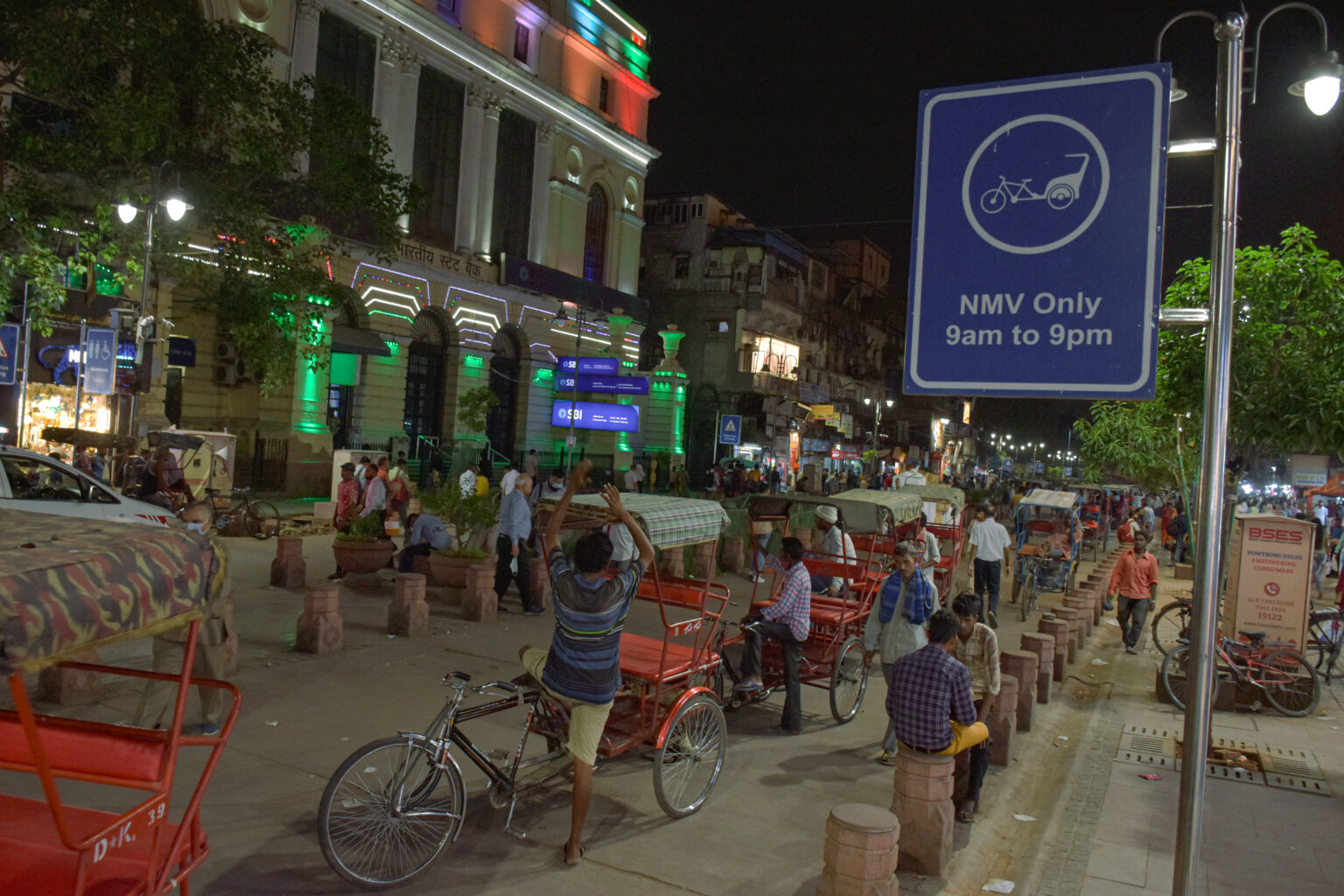
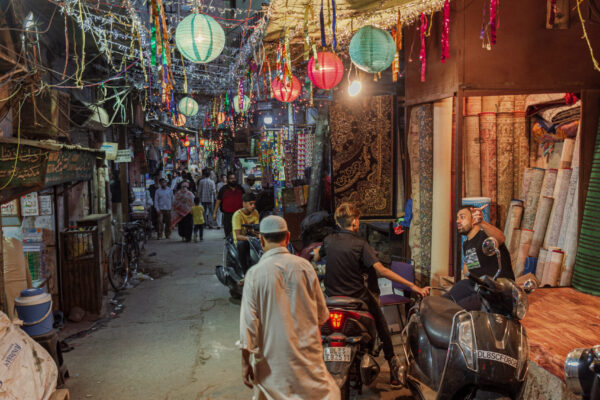
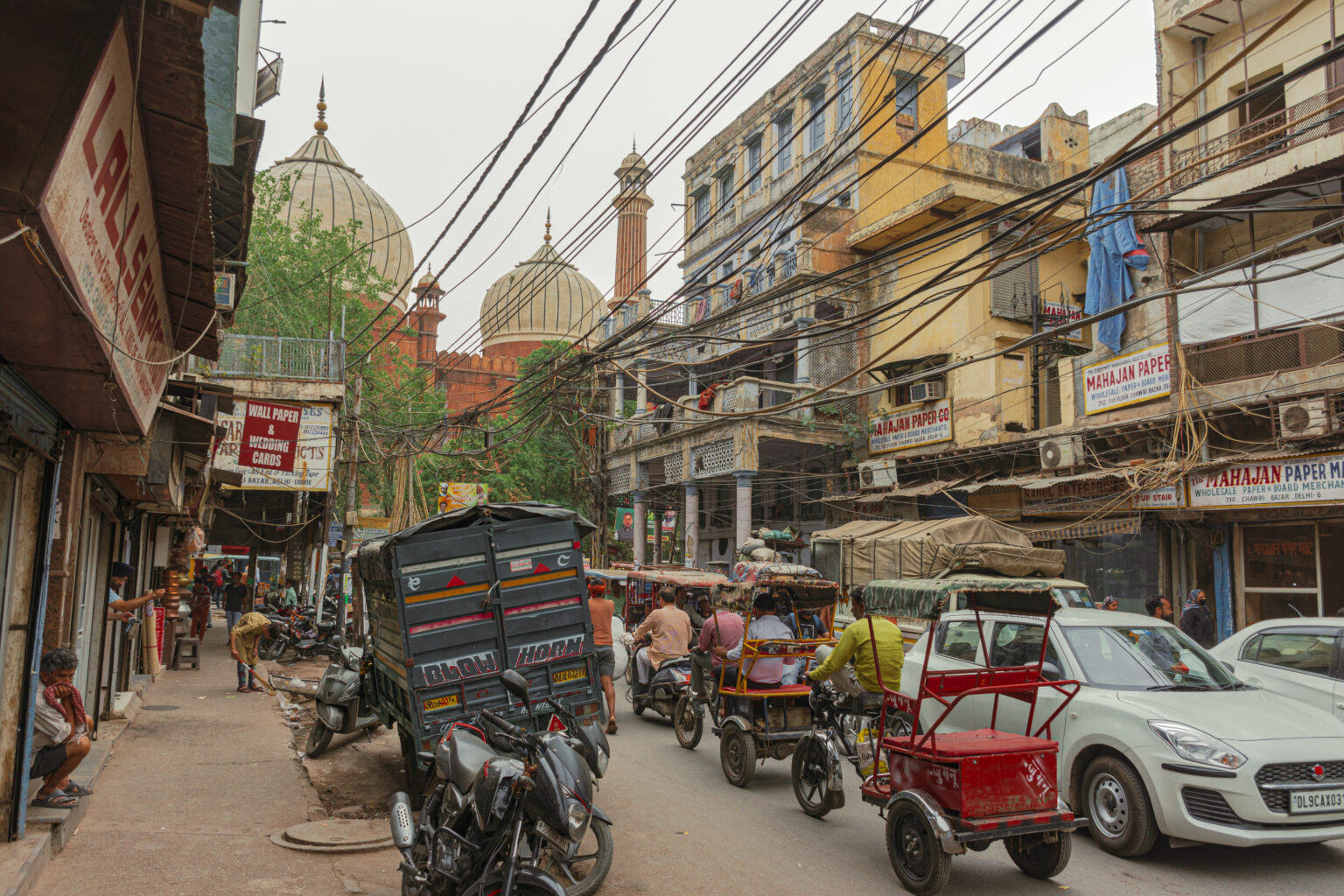
Although the project does focus on installing some public amenities such as toilets, water ATMs, police booths, traffic free zones, it largely resorted to beautifying the space with little regard for functionality or historicity. Several historians and heritage experts have argued that the 1.3 km stretch acts as a visual barrier creating a disconnect between the heritage and history of Shahjahanabad [5]. The central vista along the central median of Chandni Chowk, where the 1.3km long stretch now runs, historically had a water channel flowing through it. The reflection of moonlight in this channel ordained the place as ‘Chandni Chowk’ (moonlit square). However, instead of preserving this, the redevelopment plan breaks up the whole vista with bollards, shifting public utility services to the central verge of Chandni Chowk.
Furthermore, while pedestrianising the chowk is helpful for those on foot, it has resulted in vehicular congestion and traffic bottlenecks on the main road. Parking has become a major issue for visitors as well as traders and shopkeepers, who have difficulty loading and unloading goods [5].
Another complication of the stretch is that it gets waterlogged during the Delhi monsoon. In only focusing on the beautification of the main street to attract tourists, the redevelopment plan failed to consider the drainage system and how it would impact shops, lanes, and historic structures, which are already in dire need of attention.
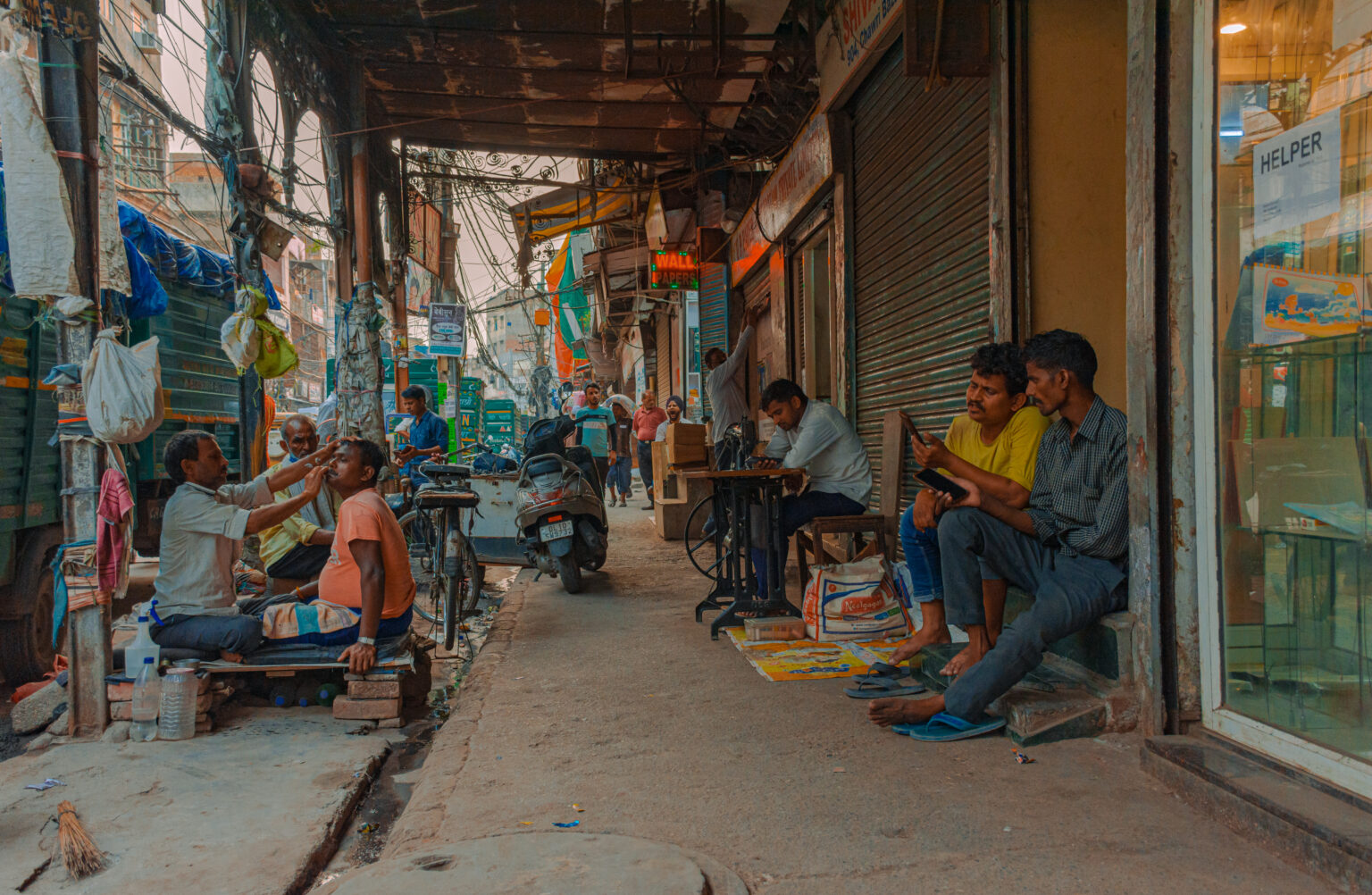
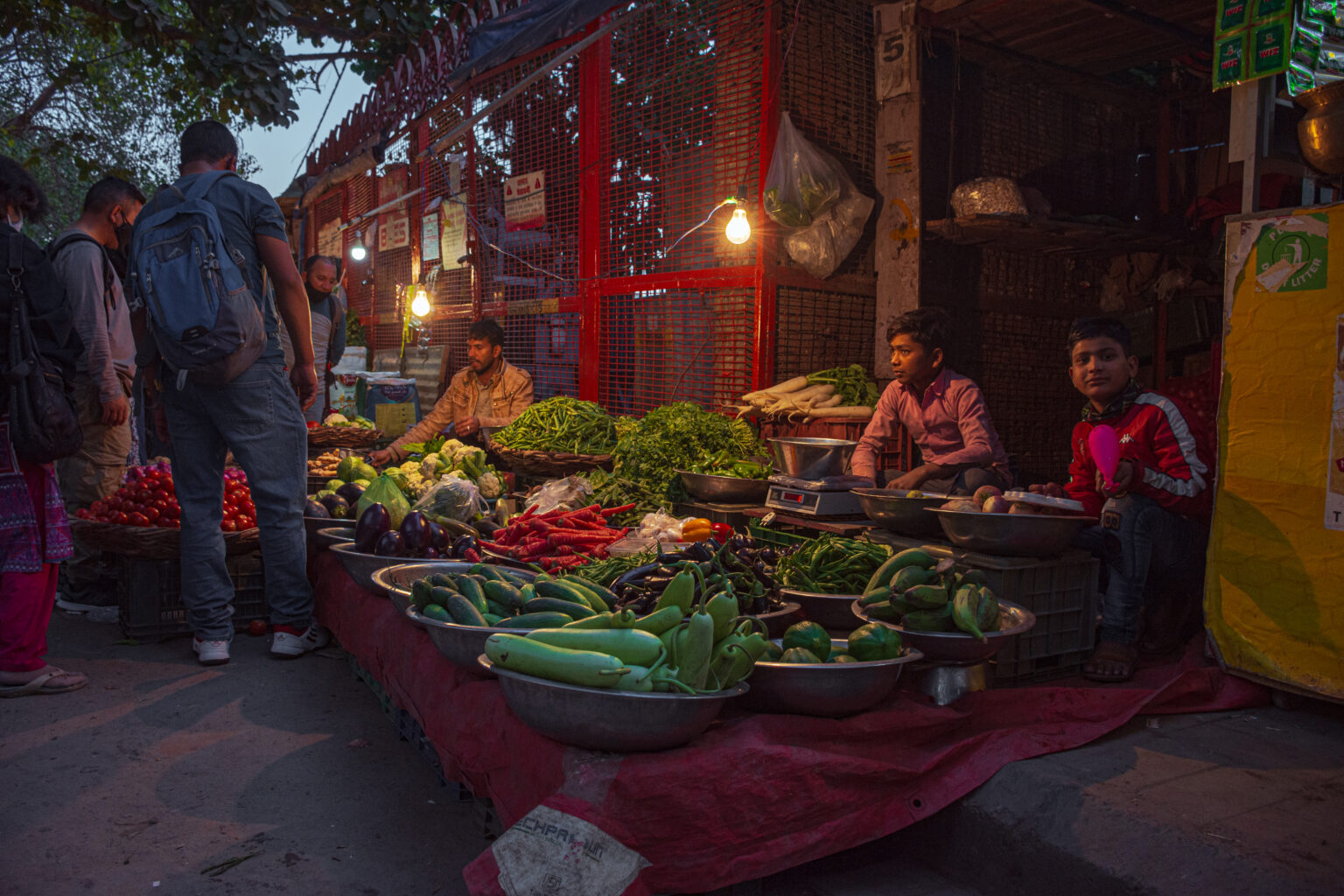
The redevelopment’s main consequence has been the erasure of street vendors and other informal workers. Street vendors, considered eyesores in the beautification process [6], were forced to move to other parts of the city. Relocations of old markets such as the phool mandi or flower market to parts of Noida and the Ghazipur have already begun. Since street markets are an essential part of Chandni Chowk, this has not only impacted the chowk’s identity but also people’s livelihoods. Recently, cart pullers protested against the redevelopment plan’s ban on carts entering the Chandni Chowk area, demanding a repeal. This restriction has affected the livelihoods of 10,000 cart pullers since they would be unable to load and unload goods to make a living wage [7].
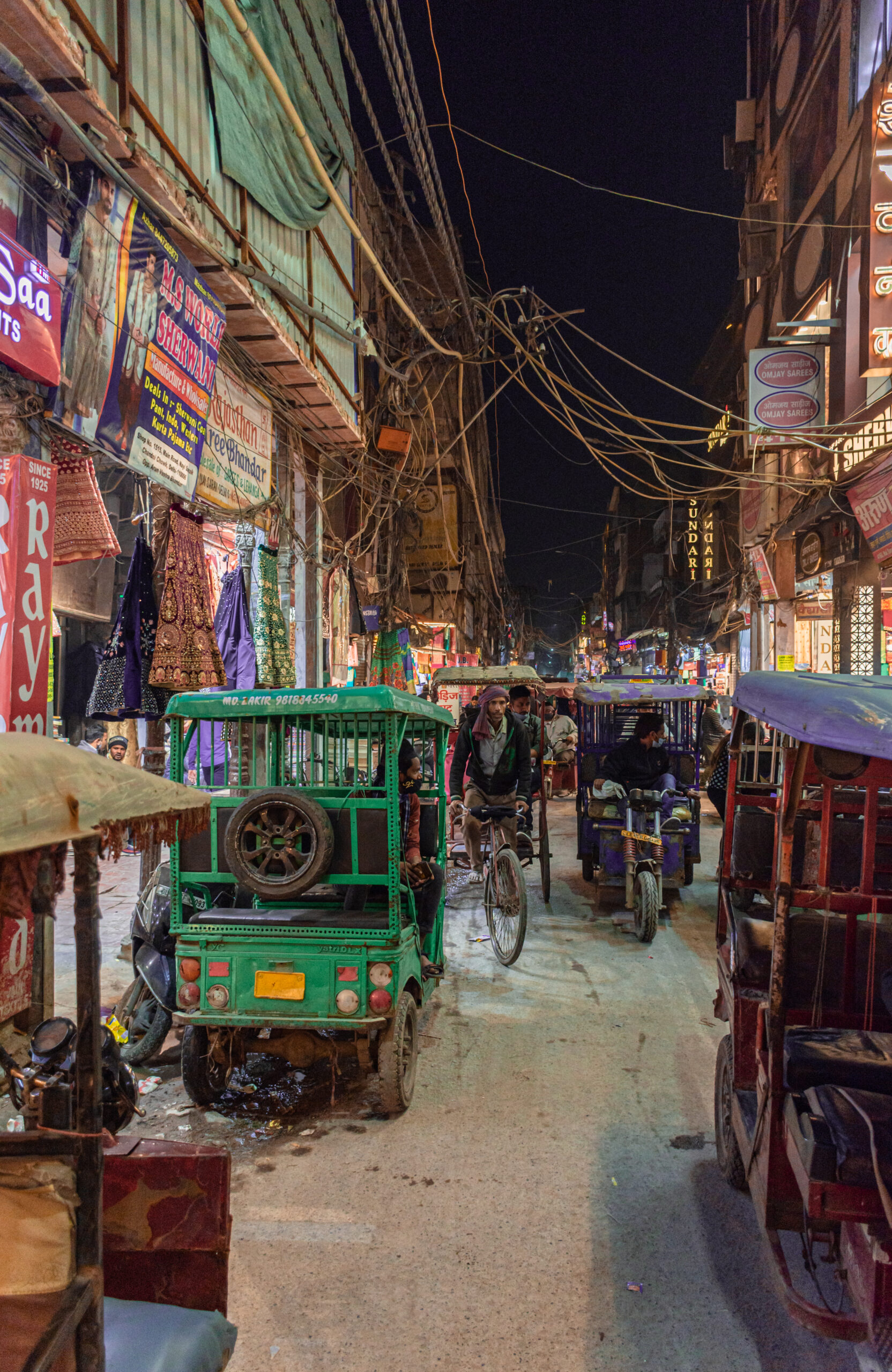
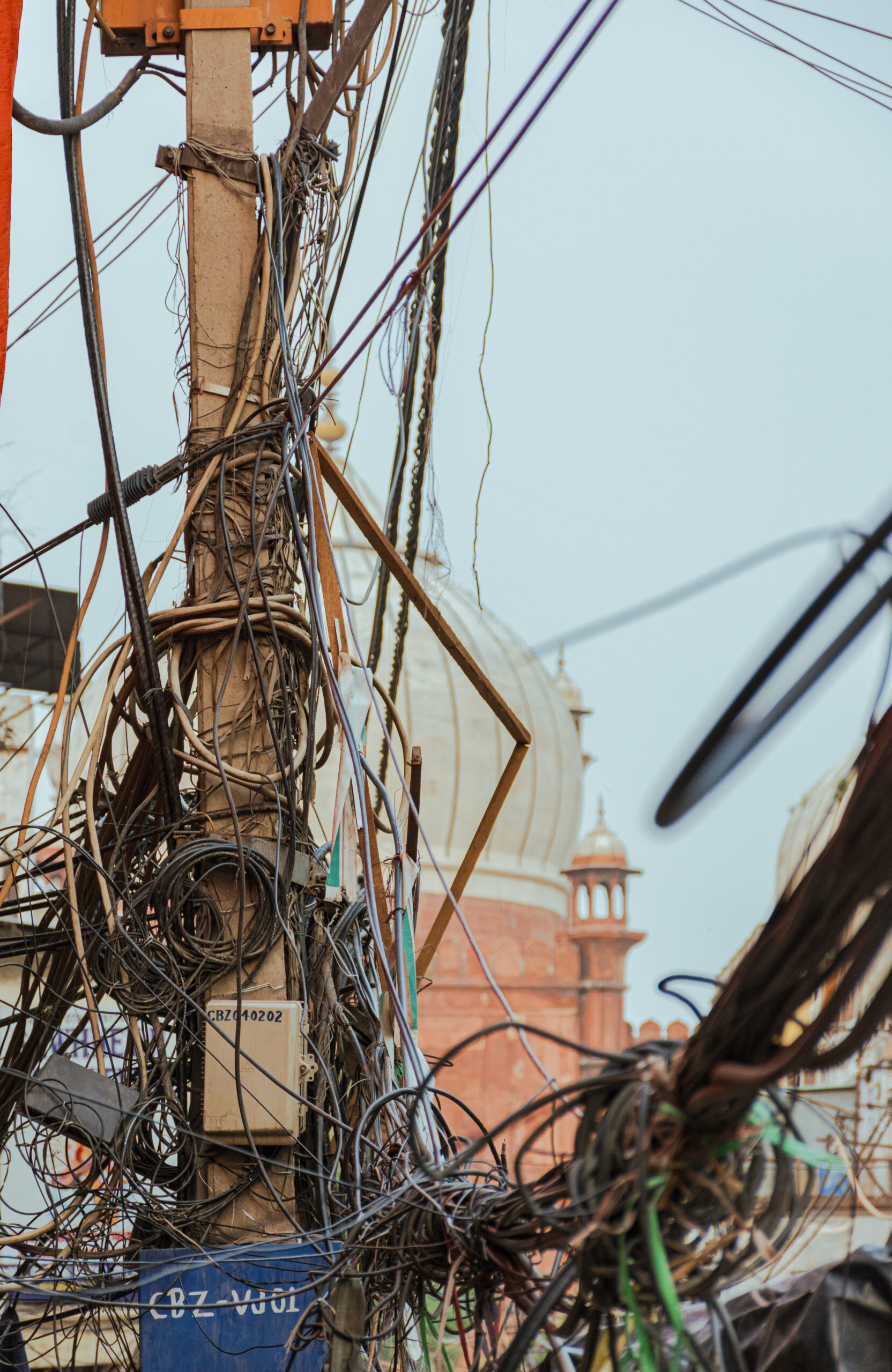
Recently, several media reports highlighted that within six months of redevelopment, Chandni Chowk has reinstated to its previous dilapidated condition [8][9].
Most of the renovations failed due to a lack of maintenance and poor management of the redeveloped areas. Some of the problems include vandalism, defacement of properties, inadequate sanitation, nonoperating CCTVs and street lights, unregulated plying of vehicles, and nonfunctional police booths, among others [6].
Even though, as part of the redevelopment plan, overhead hazardous electrical cables were placed underground, several new hanging wires have cropped up.
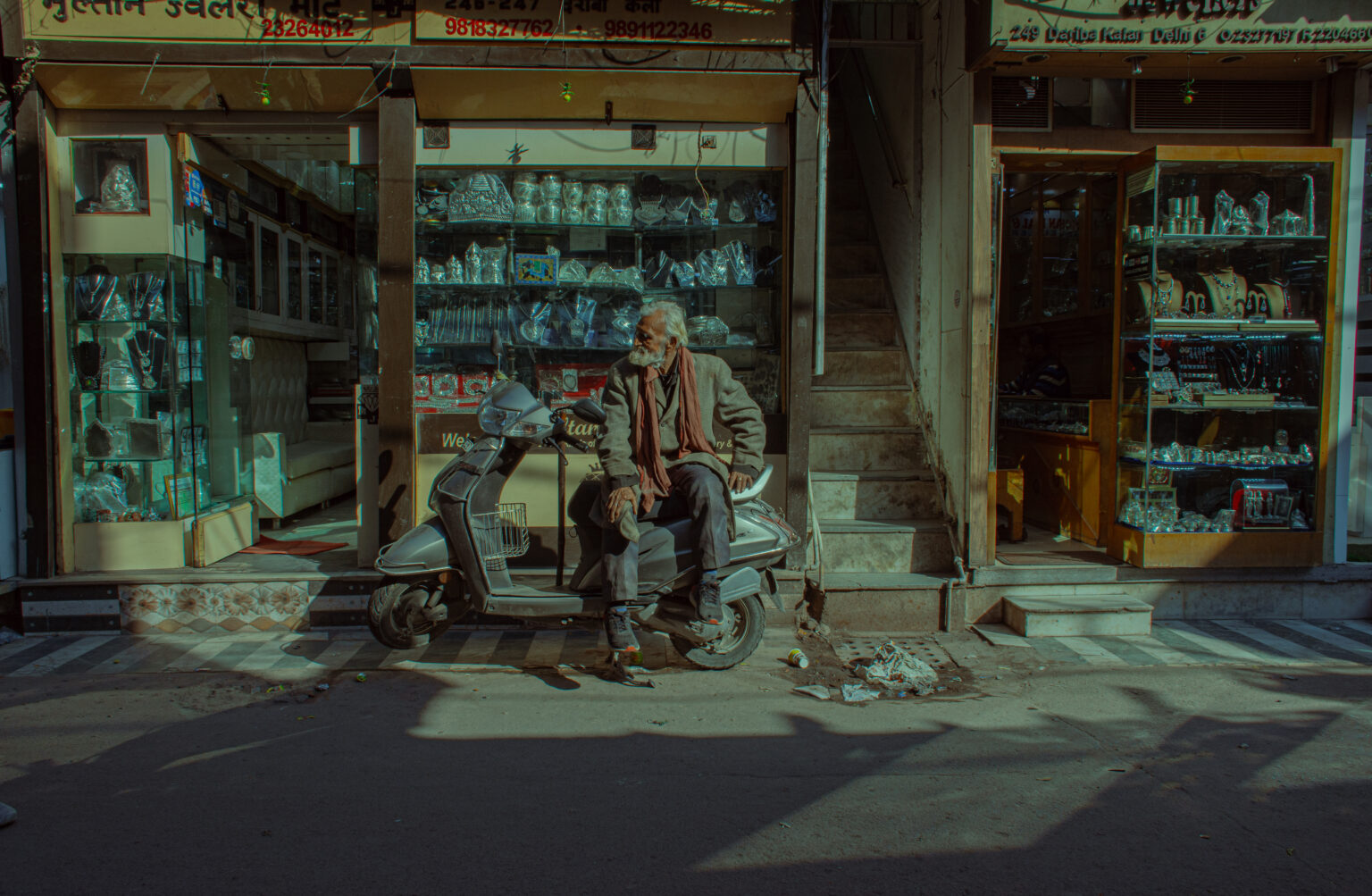
Chandni Chowk embodies a rich, complex history and is an irreplaceable cultural resource that needs to be protected. The recent redevelopment plan is a step in the right direction in acknowledging this sentiment. However, the execution is merely a superficial attempt that has failed to value the historical-cultural context and practicality. The lesson here becomes that any future conservation or restoration efforts must be done keeping the heritage value and multifunctionality of Chandni Chowk in mind.


